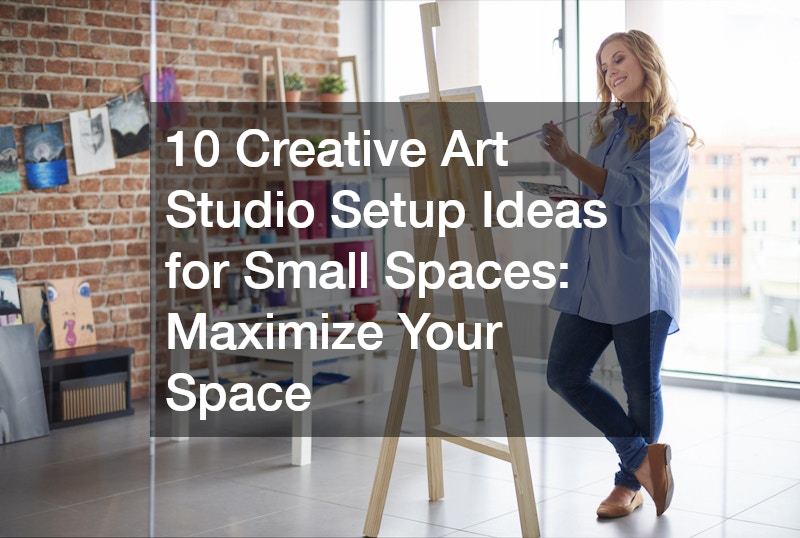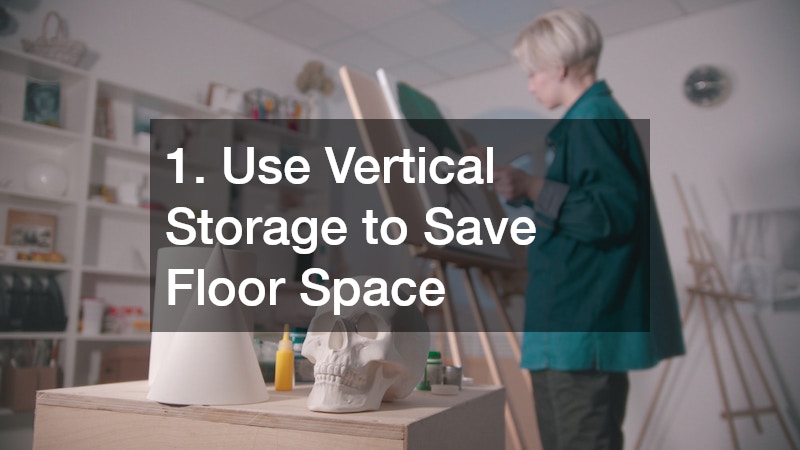
Creating an inspiring art studio in a small space can seem challenging, but it’s absolutely possible with some clever planning and creativity. Whether you’re an artist working from home or simply someone who loves to create, maximizing your workspace without feeling cramped is key. A small studio doesn’t mean you have to sacrifice functionality or style. Instead, it offers a chance to design a personal, efficient, and motivating area that fuels your passion.
In this article, we’ll explore 10 creative art studio setup ideas for small spaces that help you make the most of every inch, stay organized, and keep your artistic energy flowing. From smart furniture choices to innovative storage hacks, these tips will transform your small space into a productive art haven.
Why Is Designing a Functional Art Studio in Small Spaces Important?
Artists thrive in environments that encourage creativity and focus. But when space is limited, it’s easy to feel overwhelmed or cluttered. Designing your studio thoughtfully helps you avoid distractions, maintain order, and work comfortably. The right setup lets you keep essential tools at hand while preserving room to move and think freely.
Small spaces require smart use of vertical space, multi-purpose furniture, and well-planned lighting to feel open rather than cramped. A well-organized studio also helps protect your supplies and artwork, which is crucial for maintaining quality and motivation. Let’s dive into practical ideas that anyone with limited space can implement.
1. Use Vertical Storage to Save Floor Space
When floor space is scarce, look up! Vertical storage solutions are lifesavers in a small art studio setup.
- Install wall-mounted shelves or pegboards to store brushes, paints, and tools.
- Use hooks to hang aprons, scissors, or palettes.
- Magnetic strips can hold metal tools within easy reach.
This keeps your workspace clear and allows you to display inspirational art or sketches. Using the walls smartly transforms your small home art studio setup into an efficient creative hub.
2. Choose Multi-Functional Furniture
Multi-purpose furniture is a game-changer in tight spaces. Look for pieces that serve more than one role:
- Foldable desks that can be tucked away when not in use.
- Storage ottomans or benches that double as seating and supply holders.
- Rolling carts that function as portable workstations and storage.
These options free up space and make your studio adaptable to different projects and moods.
3. Maximize Natural Light with Strategic Positioning
Good lighting is crucial for art, and small spaces can feel dark and cramped without it. Place your workstation near windows if possible.
- Use sheer curtains to diffuse sunlight without blocking it.
- Add mirrors to reflect natural light and make the room feel larger.
- Complement natural light with adjustable LED lamps for evening work.
A bright, well-lit studio boosts your energy and helps you see colors accurately.
4. Create Zones for Different Activities
Even in a small space, creating distinct zones for painting, drawing, and storage helps keep your studio organized and workflow smooth.
- Use rugs or furniture placement to define work areas.
- Keep frequently used supplies close to their respective zones.
- Store less-used items in labeled boxes or high shelves.
Zoning also helps your brain switch focus smoothly between creative tasks.
5. Utilize Clear Containers for Easy Access and Organization
Clear storage containers let you see what’s inside without opening everything, saving time and reducing clutter.
- Stackable clear bins for paints, markers, and fabrics.
- Transparent jars for brushes and pencils.
- Label containers for even quicker identification.
This system keeps your supplies tidy and visually accessible.
6. Incorporate a Rolling Cart for Mobility
A rolling cart can be your best friend in a small art studio. It holds your essentials and can be moved to wherever you need extra space or lighting.
- Choose a cart with multiple tiers to separate supplies by type.
- Keep your current project’s materials in the cart to avoid constant searching.
- Roll it out of the way when not in use to free up floor space.
Mobility enhances flexibility and keeps your workflow dynamic.
7. Install a Fold-Down Work Table to Save Space
If you’re tight on square footage, consider a fold-down or wall-mounted table. It provides a sturdy work surface when needed and folds away to open up the room.
- Great for studios doubling as living or dining spaces.
- Easy to install and highly practical.
- Can double as a display or planning board when folded up.
A fold-down table keeps your studio clutter-free without sacrificing functionality.
8. Display Your Work to Inspire Creativity
Small studios can quickly become uninspiring if they feel like storage closets. Display your current artwork, sketches, and mood boards to keep creativity flowing.
- Use clipboards, string with clothespins, or cork boards on walls.
- Rotate pieces regularly to refresh the space.
- Include inspiring images or quotes to motivate yourself.
An art-filled environment fuels passion and pride in your workspace.
9. Keep Cleaning Supplies Handy for Quick Tidy-Ups
Maintaining a clean space in a small studio is essential to avoid chaos.
- Store a small caddy with cleaning wipes, brushes, and cloths.
- Wipe down surfaces regularly to prevent the buildup of dust or paint.
- Sweep or vacuum frequently, especially if working with loose materials like charcoal or pastels.
A tidy studio feels more welcoming and helps you focus on your art.
10. How Can You Make a Small Home Art Studio Setup Feel Spacious?
Beyond furniture and organization, consider psychological tricks to make your space feel larger.
- Use light, neutral colors on walls and furniture to reflect light.
- Keep clutter out of sight by closing cabinets or using baskets.
- Add plants to bring life and softness without taking up much room.
- Keep pathways clear to maintain easy movement.
A sense of openness encourages creativity and comfort, even in compact areas.
Final Thoughts
Setting up an art studio in a small space doesn’t mean you have to compromise on creativity or comfort. By implementing these 10 creative art studio setup ideas for small spaces, you can design an inspiring, efficient, and enjoyable workspace that fits your lifestyle and artistic needs.
Remember, the best studio is one that reflects you and supports your art journey, no matter the size. With some thoughtful planning and smart choices, your small home art studio setup can become a true creative sanctuary.




